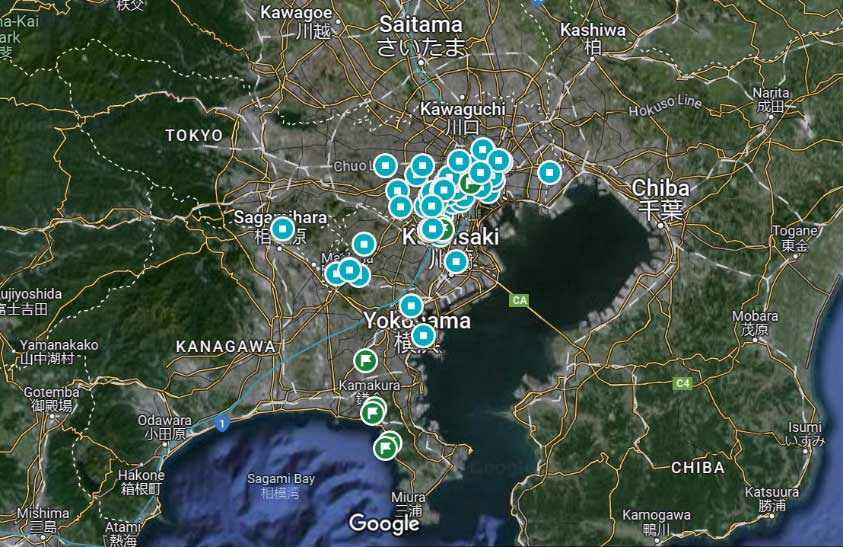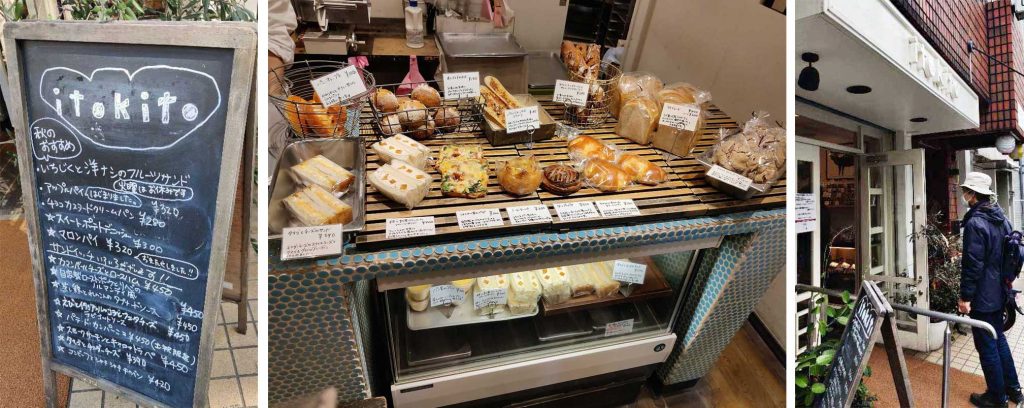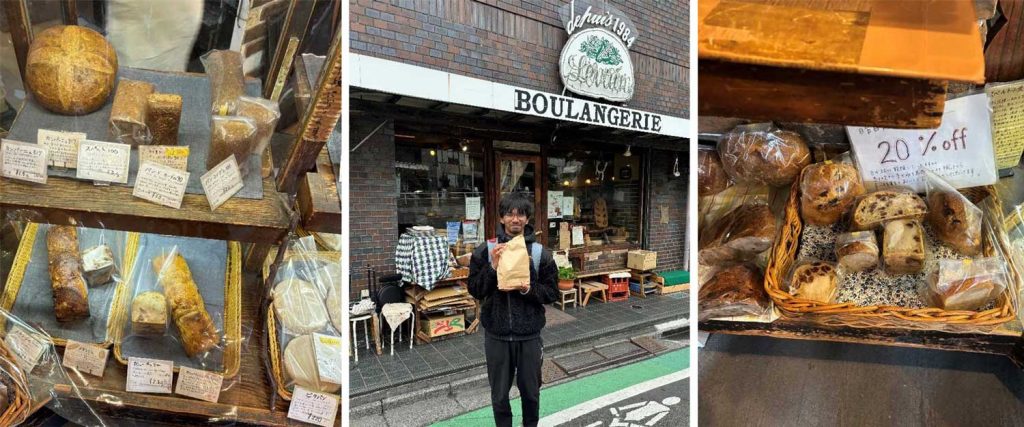I have always liked bread. To me, it was breakfast every day, along with honey and fruits. Coming to Japan has made me a bigger fan than ever. Tokyo, being a metropolitan city, has a wide variety of bakeries that cater to the different needs of everyone, from very small corner stores to large bakery chains.
Bakeries in India tend to not really be bakeries. Their products are cakes and Indian sweets and if you want bread loaves, they are usually packaged, like the ones you find at stores like Tokyu or My Basket. Seeing all the buzz online and the different styles of bread everywhere, and having a mom that has always baked quite a lot, now that I am here, I can only say I was and still am awestruck by the number of bakeries and variety of bread available, from Focaccia and sourdough to Japanese shokupan.
I maintain a really huge list of places to go, partly inspired by how one of my friends keeps his own ‘Café List’, which is exactly what it sounds like; a list of cafes he wants to visit. I frequently use his list when I am out and want to have a chat with a friend over coffee, so I found that idea pretty ingenious. There’s also a different reason why I go to bakeries so often in Japan; it’s a convenient source of halal food. Bread in itself is just wheat but different ingredients can be used as toppings and so on. All I have to do is get the stuff that obviously doesn’t use meat toppings or fillings and I am good to go.

My way of standardising or valuing a bakery (at least for word-of-mouth recommendation) is based on how the baguette, croissant or sourdough is. This is my way of judging the shop purely on its quality and taste, regardless of other factors. But to make more sense here, I am going to rate bakeries in 5 categories: Taste and Quality, Ambience, Innovation, Customer Service, and Value for Money. I would like to introduce certain bakeries, each for different reasons.
The first one is “Itokito”. This is one of my favourite places to get lunch in Ookayama. It is a small shop and there are short queues as only 2 people can stand inside at a time. I found this place off of Tabelog and stuck to it ever since. The bread items are different from the usual places, with a bit of French bread, sandwiches, and seasonal pies. My favourite from their menu is the cranberry and chocolate breadstick, which is my dessert after a baguette or sandwich. The employees know me now, so whenever I ask for recommendations, they always suggest ones without meat and based on my tastes from all of the times I have gone there hahaha, making me clearly biased. My ratings respectively are 9, 8, 10, 10, 8. Total: 45/50

The next one up my sleeve is “Levain”. The location is about 10 minutes from Yoyogiuehara Station on foot, so it’s a bit out of the way for us Tokyo Tech students, but it’s worth it. It’s styled in a bit of Japanese and European style mixed together. The atmosphere is rustic and quite cozy, though it’s always crowded (three’s actually a crowd here). Another interesting thing here is things are sold by the gram. My favourite item here is the sourdough; it tastes so sophisticated. The stuff here isn’t cheap by any means so if you are actually hungry, perhaps grab a kebab in Shibuya. My recommendations are anything sourdough, as it tastes good and you can make your own sandwiches. My ratings are 10, 9, 8, 8, 7. Total: 42/50.

The best one on the Oimachi line, in my humble opinion, is “Comme’N TOKYO”. It is a minute’s walk from Kuhombutsu station. There is also a nice shrine nearby where you can walk around before sitting at a nearby park for a little picnic. It is a simple bakery with plenty of offerings, including croissants, baguettes, pain au chocolat and many other pastries. I got a croissant, raisin bread, some chocolate thing (I forgot the name), a cream bun, and plenty of pain de campagne. I found the croissant to be crispy but soft and buttery on the inside, just like my ideal image of one. The campagne was also crispy, soft, and easy on the gums.
The time I went was during my winter break but thankfully it was pretty free that day. Also, for those who prefer gluten-free version, there is a store serving gluten-free stuff right on the opposite side. The prices are a bit high but considering how good it was, it is clearly worth it. I recommend the croissant and raisin bread. My ratings are 10, 10, 9, 9, 8. Total: 46/50

“Le Ressort” – y’all at Komaba should be familiar with this one. It’s a French bakery with lots of baguettes, croissants, and tarts. My friends and I got the obvious ones: baguettes, croissants, and pain au chocolat. There was a line and there wasn’t much time to think, so be prepared for that. We wanted sandwiches as well but as it was a tad expensive, we ultimately didn’t get them. The place is right next to the University of Tokyo-Komaba campus, so we went for a stroll through and had a little picnic on campus. It was a perfect autumn evening, if you ask me.
As for the food itself, the croissants are the best I have ever had and the baguettes were nice too. The only real downside I would say is that everything’s costly, like the baguette’s price of 440 yen, which is the highest of all the places listed. My recommendations are the pastries – so good! My ratings are 10, 9, 8, 7, 7. Total: 41/50

There are plenty more places, but I’m done for the day. I know my descriptions of each shop seems quite similar but I think unless you visit them all yourself you won’t be able to tell the differences, at least with how the croissants differ. I will end this with some tips from my experiences:
- Always keep cash, as lots of small bakeries tend to not take cards or QR payments.
- Buy a drink beforehand if you plan to picnic or eat the bread nearby. It gets your mouth and throat really dry.
- If you are getting a loaf, most places should offer pre sliced loaves or customize the number of slices.
- Eating pastries can always get messy, so be ready for that.
- If you are looking for places, check both Tabelog and Google Maps. A lot of the time, the ratings vary between both apps, so you can compare and decide.
- If you really want something in particular, go before noon or as soon as it opens.
- Feel free to ask the staff for recommendations and seasonal specialities, as they would be more than happy to help, as long as there isn’t a queue snaking all the way out.
- Make sure to check for trays and tongs, although some places may not have it.
- If you regularly visit a chain bakery, get their point/stamp card so that you can get free loaves after collecting enough of ‘em.
All in all, most of these bakeries are ones that I either really like or ones that gave me high expectations. Visiting all of them is my recommendation. Maybe next time, I will try to write about cafes, but I still am not very good at discerning great coffee from good coffee.
After reading through my own draft, I noticed that there are two other reasons besides the fact that I just like bread: one being that most are conveniently halal (usually), so I can grab one on my way to school and be on time since I don’t need to spend time checking if its halal or not. The other is that it serves as a good way to speak Japanese and form bonds. I regularly visit the little bakery near my new dorm and have a chat with the shopkeeper – she’s so lively! I also get the occasional tea from her, although I don’t really know anyone yet hahaha!!
